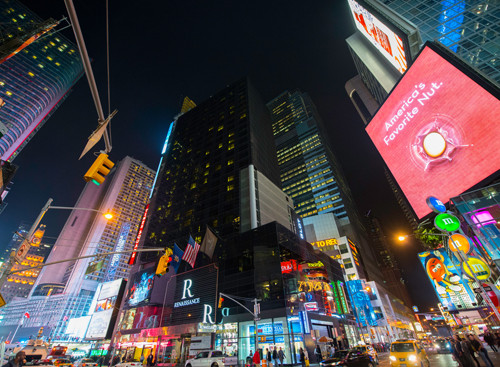With annual revenues breaking the £1bn revenue barrier for the first time, more money is being spent on out of home (OOH) than ever before.
Thanks to smart investments, changes in consumer behaviour and refined creative executions and planning, advertisers are seeing the OOH audience increase. The time-poor phenomenon means that people are out of home more often, and need to do much more while on-the-go. Unlike other media, OOH can’t be filtered, fast-forwarded or switched-off. Advertisers and consumers are reacting to these unique traits.
But while the industry has made major gains in driving market share and, crucially, working with connected devices, advertisers may still see a stumbling block when planning genuinely national campaigns. According to the most recent national census (2011), the UK has a population of more than 63 million, with eight million (12.7%) living in London. Going by Route data, the placement of OOH fails to reflect this split, with almost half of the 372,818 registered UK OOH sites being in London. Of course, the population density is at a premium in the city, at just over 5,200 per square kilometre, so it makes sense for media owners and advertisers to capitalise on high footfall. However, does this mean that OOH is missing out on a vital audience?
OOH is developed by where it will reach the largest number of consumers, so naturally this has meant that sites are installed within city boundaries where people converge. But more and more city centres are pricing out the average consumer, so the industry needs to think more about wider reach. But this doesn’t necessarily mean launching more sites in suburban areas. There is a great deal of outstanding OOH in city centres across the country but to deliver true national reach the message needs to go far beyond the city to accompany consumers throughout their day.
Marketers need to consider a mix of formats to capture consumers, planning messaging which creates impact in alternative places, tapping into fresh mindsets at different times during their day. Rather than increasing the physical OOH inventory once again we need to focus on using the right formats at the right time to deliver an increased audience.
More advertisers could improve campaign effectiveness by utilising more than one environment for a campaign. Brands need to think more strategically about contextual advertising and delivering relevant messages – if a consumer is making long car journeys they may be more susceptible to advertising for a new car, while those jumping on a train at midday Saturday could be in the market to consider their next outing to the theatre. Convergence points like shopping malls, health clubs and public transport need to be targeted effectively.
Marketers must also consider OOH in the digital age and continue to target the connected consumer. KBH On-Train Media’s Dipsticks 2013 research showed 92 per cent of travellers use a smartphone whilst travelling – an ideal time to interact with OOH advertising.
Ofcom reported at the end of 2014 that 44% of households now have a tablet – up from 24% in 2013. Smartphone take-up has also continued to increase rapidly, with 61% of all adults owning a device, compared to 51% a year earlier. The growth in smartphone use in particular has contributed to people spending an extra two hours per day on media and communications since 2010.
As the device uptake continues, online shopping is also on the ascent. According to the Centre for Retail Research, the UK will have the highest online percentage market share of retail in 2015, with 15.2% of all retail sales made via connected devices. Sales are predicted to grow by more than 16% to £52.25 billion by the end of the year. So given this trend, the 6-sheet at the heart of the high street doesn’t seem quite so effective when planned on its own; reaching the same consumer who may be thinking about buying an outfit via a smart device during the downtime in their day instead is more important than ever. The city centre 6-sheet needs to work in conjunction with OOH which can influence online, on-the-go shopping behaviour. Multiple OOH channels must be used to ensure the consumer is reached, whether they are planning an online or physical purchase.
More than ever, the likes of train carriages and buses are being used as mobile offices, places to shop and living rooms on the move as consumers are taking advantage of increased connectivity coupled with a rare ‘pause point’ in their busy schedules. This offers a real opportunity for brands.
The combination of dwell time and smartphone usage will enable creatives to have more scope in pushing people to an online brand presence via an out of home message knowing that they have the time, the inclination and the connectivity to do so. According to Dipsticks 2014, 40 per cent of travellers have bought a product or service via a connected device while on the train, compared to just 10 per cent in 2013.
So while the uneven geographical spread of OOH might not change anytime soon, the reach of campaigns doesn’t have to be similarly limited. Using relevancy, accuracy and a range of formats to reach consumers at different touch-points throughout their day are the right ingredients to make a message relevant at multiple moments.






